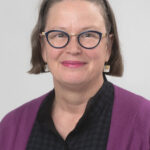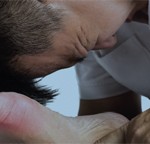
Several years ago, at a venerable New York hotel, I attended a meeting that has made a lasting impression on my thinking. The purpose of the event was to bring together academic physicians of all levels for two days of lectures, dinners, and talk. On the first afternoon, we had breakout sessions to discuss topics of major, even pretentious-sounding, importance: the future of clinical research, the health of the Third World, the genetic revolution. The breakout groups comprised everyone from a post-doc to a professor and featured an eclectic mix of sub-specialties, all sitting around tables in darkened meeting rooms that were oppressively overheated.
The breakout groups were charged with reducing our deliberations into a key concept to guide future clinical or basic research, policymaking, or even a personal career choice. Although the groups focused on different subjects and had amazingly diverse memberships, we all came back with the same word. That key word was (drum roll, please) complexity.
You may find it ironic that complexity could be a simplifying concept but the unanimity of its selection shows how complicated medicine has become.
As Simple as Complexity
Everything about modern medicine is complicated. I love adjectives, so I suggest the following other descriptors of our current state: multifaceted, convoluted, intertwined, interdependent, interdigitated, intricate, thorny, and downright confusing. Nothing in research is simple anymore. Clinical trials can number 50,000 patients and—with mathematic and statistical analyses worthy of astrophysics—provide evidence for 1.1 relative risk of an adverse event that occurs in one in a thousand subjects. Genetic studies are similarly baroque, involving hundreds of SNPs distributed unevenly in the population but, in certain alignments (or phases of the moon), produce a suggestion that genes do matter after all. Microarray analyses are even worse because, in reality, each data point comprises myriad others.
Clinical medicine can be similarly dizzying in its practice. Each decision involves a measured and deliberate weighing of risks and benefits, which must be explained in a comprehensible way to the patient even though the physician might be clueless about the right choice. The problem is that the risks and benefits are often uncertain, shifting, or imprecise. While, as professionals, we pride ourselves for being evidence based, often the evidence simply does not exist.
Our breakout groups were correct. Complexity governs our work as physicians and providers.
No More Easy Decisions
As noted in “Sniff 101 and Other Lessons” (April 2007, pg. 6), I recently attended on general medicine and was amazed by the complexity of the medical problems I saw and the tortuous thought process necessary to devise even the most basic diagnostic or therapeutic plan. Modern medicine is now like a chess game; we have to plan for many moves in advance knowing that our opponent, sickness, is cagey, mean, and unpredictable. How do you play chess against a madman, knowing that erratic moves can beat even the cleverest strategy?
Consider a recent case that I saw. The diagnosis was unquestionably gout. A joint tap—deftly accomplished by a rheumatology fellow—produced several drops of cloudy albeit blood-tinged fluid. Using the marvelous optics of the polarizing microscope, the diagnosis was a slam dunk as yellow crystals glowed luminously on the slide. While the fluid was sent for gram stain and culture, the evidence was sufficient to start treatment. Treating gout should be simple except, for this patient and numerous others we see, it was limited by far more Scylla and Charybdis channels than I like to navigate.
The patient was 72 years old, looked 100, and was breathing oxygen frantically through a nasal cannula. He had heart failure and an ejection fraction of 20. His creatinine was 2.5; his blood urea nitrogen was 60 and rising as intermittent squirts of Lasix squeezed fluid from his tissues. As if that was not bad enough, he had a fever and an infiltrate on chest X-ray that could have been pneumonia, atelectasis, or pulmonary congestion; maybe two out of three or—if the patient was especially unlucky—all three together in a perverse trifecta of pulmonary misfortune. Oh, did I forget to mention that he was on coumadin because he recently had a pulmonary embolus that almost killed him? In the midst of all this trouble, the poor man now had gout that was scalding the skin off a knee that shined bright red.
In the old days, gout was a simple problem and colchicine was the morning-after pill for an evening of debauchery. Now gout is a therapeutic dilemma, with a chessboard of decision-making filled with seeming checks and checkmates as solutions are conjured. NSAIDs? No way. The creatinine and heart failure make them a bad choice. Systemic corticosteroids? Possible, but the infectious disease consultant tending to the pneumonia is worried about immunosuppression. Intraarticular steroids? With the INR near 3, an errant needlestick could flood the joint with blood.
What Would You Do?
I won’t tell you what I recommended. Send your suggestion to me at [email protected]—I’m curious what others would decide. The point is, as people have grown older and sicker, medical decision-making has escalated in complexity.
Dr. Jim Fries has written presciently and eloquently about the compression of morbidity. His hypothesis is, as medical care has improved and life expectancy has increased, the time a person suffers from disability diminishes and concentrates at the very end of life. The good part is that many people live longer, happier, and healthier lives, with the price of longevity paid mostly at life’s denouement.
That is the optimistic version. The pessimistic view is that, when morbidity comes, it hits like a ton of bricks. While morbidity may be compressed in time, medical care then explodes in magnitude, complexity, and, of course, cost. Decision-making requires enormous thought and attention to detail when a patient suffers simultaneously with four or five major illnesses and has a 30 item med list. As medicine gets more and more complicated, doctors and patients can go down blind alleys as they make their choices, never knowing when some disaster will come out of the blue to inflict a terrible blow. Who would have predicted that gadolinium would cause menacing skin fibrosis if the kidneys do not work?
Attending on medicine should teach respect for how complicated patient care has become, especially as people live longer and their bodies fill with myriad drugs. In the next issue, I’ll discuss why consultation and collaboration are important so that confronting complexity does not bewitch us and hurt doctor and patient alike.
Dr. Pisetsky is physician editor of The Rheumatologist and professor of medicine and immunology at Duke University Medical Center.


